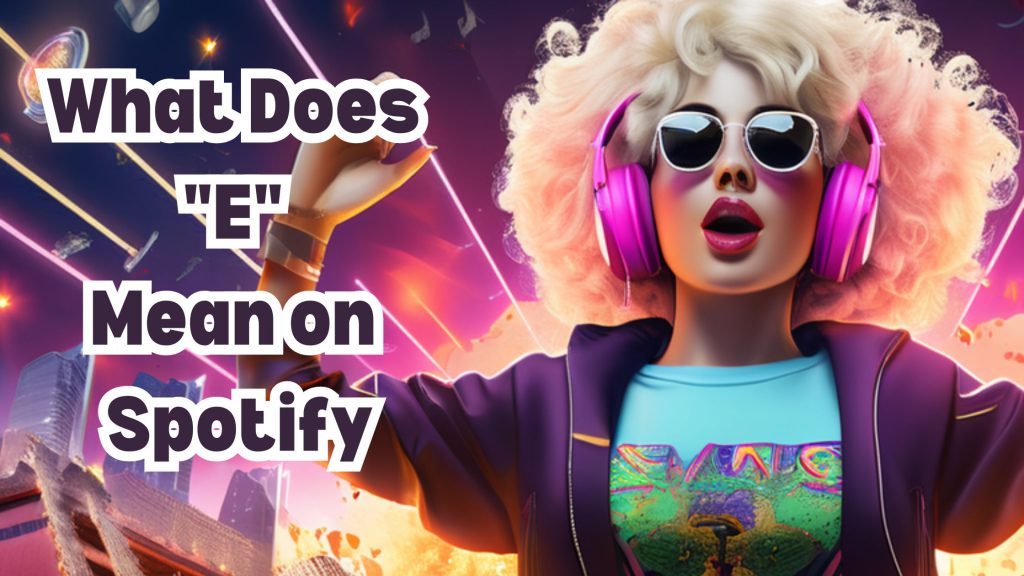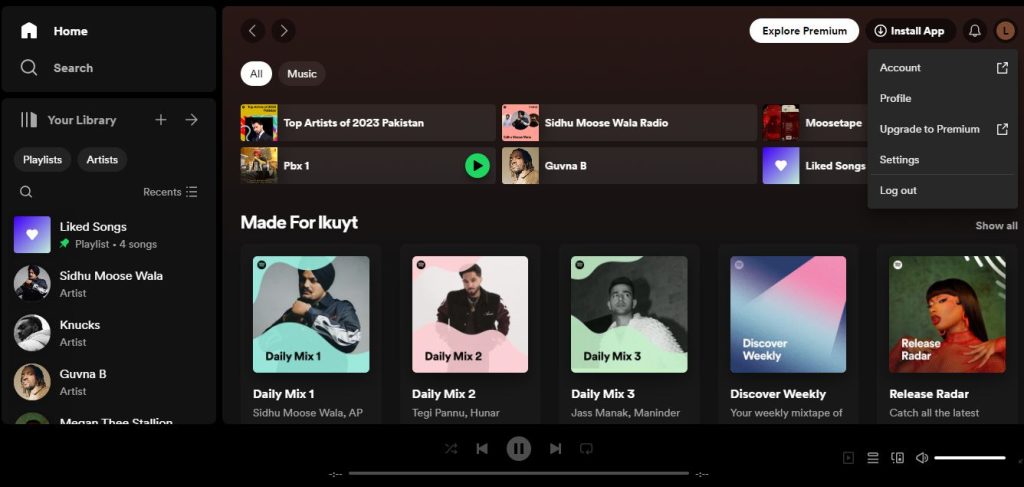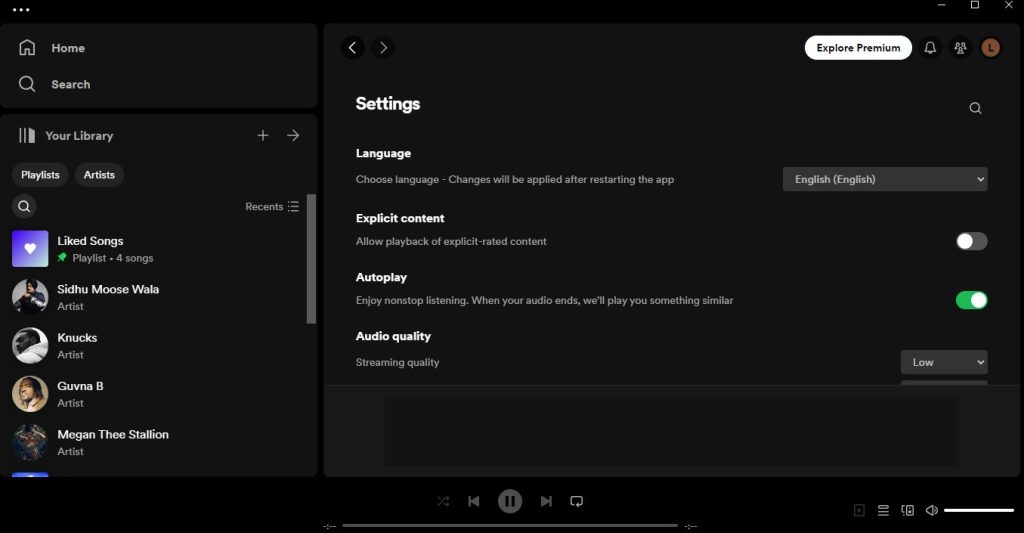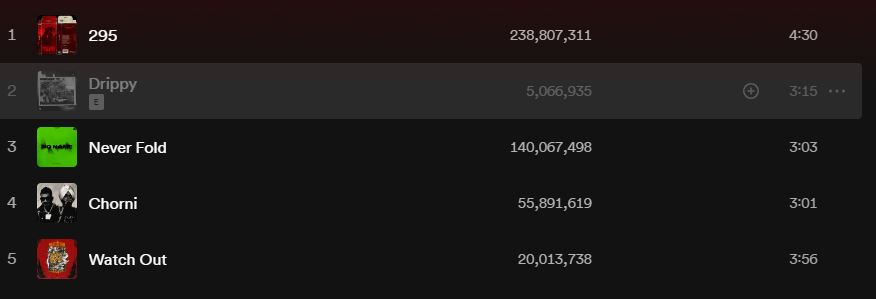Have you ever wondered about the mysterious “E” symbol next to certain songs on Spotify? In this guide, we’ll delve into what the “E” means on Spotify and provide valuable insights into managing explicit content on the platform. From understanding explicit song meanings to toggling explicit content settings, we’ve got you covered.
Table of Contents
What Does E Mean on Spotify
Understanding Explicit Content:
The “Explicit” label on Spotify signifies that a song or music video contains material that may be considered offensive or unsuitable for children. This can include strong language, references to violence or abuse, sexual behavior, and discriminatory language. Artists and record labels are responsible for marking tracks as explicit to ensure appropriate labeling and distribution across platforms.

Why Does Spotify Mark Songs as Explicit?
1. Respect for Artistic Freedom:
Artists have the freedom to express themselves creatively, which may sometimes include themes or language that could be considered explicit. Spotify respects this artistic freedom and aims to present music in its original form as intended by the creators.
2. Providing Content Warnings:
The “Explicit” label serves as a content warning for users, especially parents, who want to ensure that their children are not exposed to inappropriate material. Spotify’s marking system alerts listeners to the presence of content that may not be suitable for all audiences.
3. Empowering User Choice:
By labeling songs as explicit, Spotify gives users the power to make informed choices about the content they consume. Whether users prefer to listen to clean versions of songs or are comfortable with explicit content, Spotify provides options to customize their listening experience according to their preferences.
4. Regulatory Compliance:
In certain regions, there are regulations or industry standards that require platforms like Spotify to label explicit content. By adhering to these guidelines, Spotify ensures compliance with legal requirements and industry norms, fostering a responsible approach to content distribution.
How to Manage Explicit Content on Spotify:
How to Turn Off Explicit Content on Spotify:
Step 1: Access Account Settings:
- Open the Spotify app on your mobile device or desktop.
- Tap on your profile icon for desktop o located in the top-right corner of the screen.

Step 2: Navigate to Content Preferences:
- In the menu, select “Settings” or “Account Settings,” depending on your device.
- Look for the “Content Preferences” or similar options in the settings menu.
Step 3: Disable/Enable Explicit Lyrics:
- Within the Content Preferences section, locate the option labeled “Allow Explicit Content” or “Explicit Lyrics.“
- Toggle the switch to turn off explicit content. The switch may appear as “on” by default.
- If you have a premium plan you can also manage each user’s account preferences by Switch (Explicit content) on or off.

Step 4: Confirm Changes:
- Once you’ve disabled explicit content, exit the settings menu.
- Your preferences will be automatically saved, and Spotify will filter out explicit songs from your recommendations and searches.
Step 5: Enjoy Your Music:
- With explicit content turned off, you can now enjoy Spotify without encountering songs containing mature themes or language.

Note: All steps are same for Android, iOS, Windows and Mac Operating system option names may vary a little bit.
Marking Tracks as Explicit:
Artists and creators should ensure that tracks containing explicit material are appropriately labeled. Failure to mark explicit content may result in the content being hidden, and the entire release may be labeled as explicit if even one track contains explicit material.
Regional Restrictions:
It’s important to note that explicit content may not be sold in certain territories, including Belarus, Burkina Faso, India, Nepal, and Uzbekistan territories.
You may also like our other guides:
Frequently Asked Questions
While Spotify doesn’t have a direct reporting feature for explicit content, you can contact Spotify support if you encounter content that violates Spotify’s guidelines or community standards. Provide details about the song or album in question, and Spotify’s support team will review your report.
Explicit content on Spotify includes strong language, references to violence or abuse, sexual behavior, and discriminatory language.
If you come across a song on Spotify that you believe should be marked as explicit, you can contact Spotify support and provide details about the content.
Yes, Spotify allows users to adjust their content preferences to enable or disable explicit content.
Final Words
The “E” symbol on Spotify serves as a valuable indicator of explicit content within songs or music videos. By understanding what the “E” means and how to manage explicit content settings, users can tailor their music experience to their preferences.
Whether you choose to enable or disable explicit content, Spotify offers flexibility and control to ensure a personalized listening experience. So, next time you encounter the “E” symbol on Spotify, you’ll know exactly what it signifies and how to adjust your settings accordingly.
